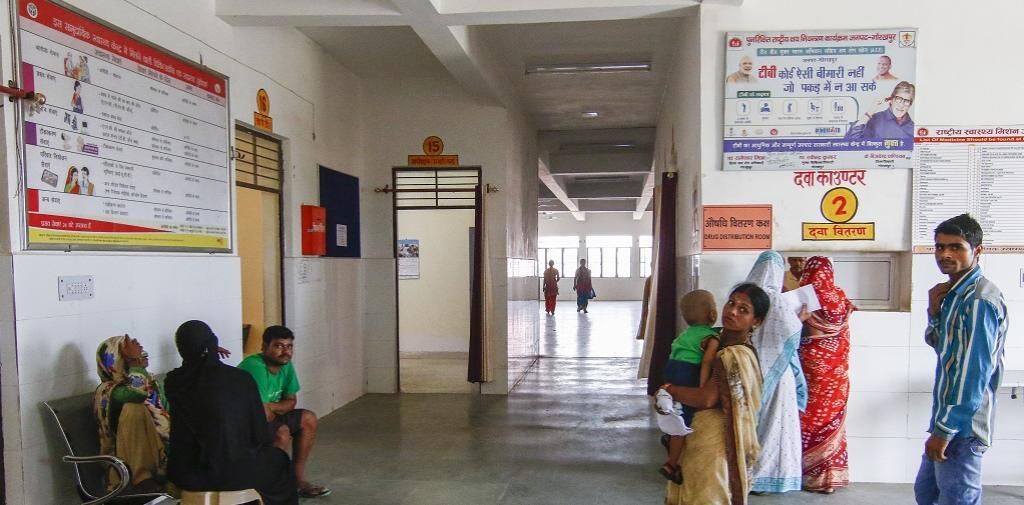Towards affordable healthcare
In order to capitalise upon the full potential of PMBJP, India needs greater budgetary allocation, supply-side intervention and efficiency in production and storage

Health is not just a choice of individuals but a necessity of the nation
India marked the Jan Aushadhi Diwas 2022 in mid-February. Prime Minister Narendra Modi launched Pradhan Mantri Bhartiya Janaushadhi Pariyojana (PMBJP) in 2015, with a vision to provide affordable and quality medicine to the citizens of India.
The scheme was established under the department of pharmaceuticals of the Union Ministry of Chemicals and Fertilizers.
Since its establishment in 2015, more than 8,000 'janaushadhi kendras' (centres) have been operationalised across India. These centres cater to a large section of our society in the nooks and crannies of our country by offering 1,451 generic drugs and 240 surgical items at an affordable price.
In the long run, PMBJP aims to make healthcare affordable, accessible and acceptable to all citizens.
Need for affordable healthcare
Health is one of the central pillars of a nation's human development index (HDI) that indicates its prosperity. Health is not only a basic necessity for an individual but also an integral ingredient of human capital for the nation.
Given this, every nation aims to provide good healthcare to its citizens at an affordable cost through various initiatives and schemes. PMBJP is one such noble initiative in India to facilitate affordable and accessible healthcare.
India is the biggest democratic country and one of the fastest-growing economies in the world. Despite this, the budget allocation to healthcare is less than 3 per cent. India's population is dominated by rural domiciles and mid-income groups.
About one-third population of our country is devoid of health insurance. The prevailing diseases and pandemic outbreaks add to the perils of the situation. Considering these vital factors, it is important to make healthcare affordable to the population.
Medicines (aushadhi) and surgical equipment have a larger share in healthcare. Making them reach the common mass of our society solves a major issue in healthcare. This makes 'Jan Aushadhi' a 'jan-upyogi' (useful for the mass).
Patented drugs have taken over generic drugs, with the emergence of privatisation, market competition and profit hunger in the pharmaceutical industry. This resulted in burning a hole in the pockets of individuals for maintaining essential health hygiene.
India's out-of-pocket expenditure on healthcare is more than 60 per cent, according to Niti Aayog's latest report. This is significantly above the average for lower-middle-income countries.
In short, India has a gruesome healthcare challenge to address. PMBJP aims for this through its increasing outreach and affordable generic drugs.
PMBJP also serves employment opportunities to the human resources in the pharma sector. It provides financial assistance and support to qualified personnel to open 'Janaushadhi Kendra' and generate income.
In addition to the direct employment opportunity, Janaushadhi Kendra generates peripheral employment in the associated supply chain, transportation and maintenance sectors. PMBJP, thus, is 'aushadhi' not only for health but also for the wealth of the nation. It is indeed a 'jan-upyogi'.
Way forward
In the last seven years, PMBJP has achieved significant milestones in terms of the wider presence of 'Janaushadhi Kendra' in the country and providing affordable drugs. However, given the increasing and ageing population and fear of a pandemic, there is a vital need to support and promote this initiative for its sustainability and growth.
To this end, the following issues are the most important: First, increasing outreach of the 'Janaushadhi Kendra'. Second, promotion for increasing awareness of PMBJP. Third, maintaining the affordable price of generic medicines despite increasing inflation and supply cost.
To address these issues, recommendations are as follows:
First, to increase the outreach of 'Janaushadhi Kendra', an increase in the healthcare budget for infrastructure and financial support is required. In addition, public-private partnership models for generic drugs should be mulled over to increase the competitive participation of more private players and expand the outreach. Training and development of pharmaceutical staff will also be required in the expansion of 'Janaushadhi Kendra'.
Second, to spread awareness about PMBJP and 'Janaushadhi Kendra', collaboration with local hospitals, clinics and doctors is required. Apart from typical advertisement campaigns, this is a very effective way to build the trust of locals in the efficacy of generic drugs. Patients believe in the doctor's prescription, not in an ad description.
Finally, to hedge against inflation and maintain the affordable prices of generic drugs, supply-side intervention is required. This primarily includes research and development of drugs to bring the efficacy of generic drugs to par with that of patented drugs, at less cost.
Efficiency in production, storage and supply chain would also help in slashing the input cost and thereby, maintain affordable prices without compromising the stakeholders' profit interest.
Affordable, accessible and acceptable drugs are every citizen's right. Health is not just a choice of individuals but a necessity of the nation.
PMBJP is a noble initiative towards 'healthy India'. It not only makes drugs accessible to common citizens but also generates employment. It is important to make this initiative sustainable for future India. DTE
The writer is a Senior Research Scholar, Department of Management Studies, Indian Institute of Science, Bengaluru. Views expressed are personal



